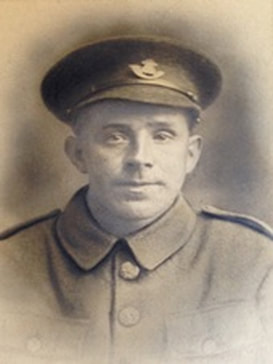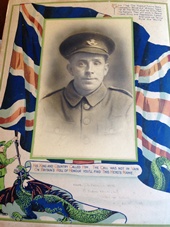Menin Gate Memorial
Roll of Honour
B
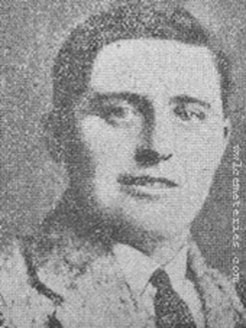
11246 Private
John Thomas Bailey (Real surname Birley)
1st Bn. King's Own (Royal Lancaster Regiment)
24th May 1915, aged 24.
Panel 12.
(Served as BAILEY) Son of Mr. and Mrs. F. R. Birley, of 154, New Hall St., Burnley.
John Thomas Bailey (Real surname Birley)
1st Bn. King's Own (Royal Lancaster Regiment)
24th May 1915, aged 24.
Panel 12.
(Served as BAILEY) Son of Mr. and Mrs. F. R. Birley, of 154, New Hall St., Burnley.
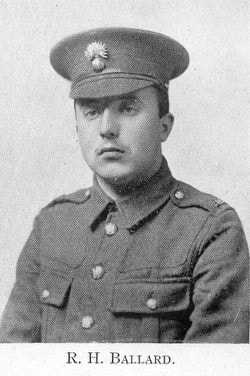
1926 Private
Roger Hardwicke Ballard
1st Bn. Honourable Artillery Company
16th June 1915, aged 22.
Panel 9.
The information below supplied by 'The Ellesmerian Club', the alumni organisation for Ellesmere College where Roger was a pupil.
Roger Hardwicke Ballard
1st Bn. Honourable Artillery Company
16th June 1915, aged 22.
Panel 9.
The information below supplied by 'The Ellesmerian Club', the alumni organisation for Ellesmere College where Roger was a pupil.
Roger Hardwicke Ballard was born in Bromyard, Herefordshire on 22nd January 1893, the youngest of three sons of Edmund and Lucie Ballard. Sadly, he would never have really known his mother as she died the following year.
Roger entered the ‘Alfred’ dormitory at Ellesmere College in north Shropshire in February 1904, a month after his eleventh birthday, and was to remain in residence for five years. He left in April 1909.
During his time at Ellesmere, he was described as ‘one of the leading boys’ academically who showed “an excellence in Geography” whilst being awarded the Form IV Divinity Prize at Prize-giving in 1908. He was an active member of the Debating Society. It would appear that his sporting skills were mainly on the football pitchbut he also represented his dormitory in cricket and hockey. He enlisted in the Officer Training Corps and was proud to mention this experience on his Attestation Papers when he signed them at the outbreak of war.
It is not known if he went onto to undertake any other form of further education after leaving Ellesmere but the 1911 Census records that he was living in a boarding house in London and was employed as a clerk by the Economic Insurance Company. As he lived and worked in London, it was only natural that he should enlist in the city and he signed up on 5th September 1914 at Armoury House, Finsbury Square, London as Private Ballard, Service No.1926, the Honourable Artillery Company. He was twenty-one years old ‘with excellent vision and physical development’.
On enlistment, he was seconded to the 1st Battalion, the H.A.C. (Infantry) and, after his basic training, embarked for France on 29th December with the British Expeditionary Force. He was reported ‘missing’ at the Battle of Bellewaarde, near Ypres, West-Vlaanderen, Belgium on 16th June 1915.
1, 394 Allied servicemen lost their lives in various theatres of war that day.
Roger was awarded the Victory Medal, the British War Medal and, as one of the soldiers to see overseas service in the early months of the war, the 1914-1915 Star. His next of kin were recorded as his father, Edmund, his two brothers, Edmund and Herbert (both of whom had emigrated to the United States) and his sister, Laura, who remained at home in Ledbury, Herefordshire.
Roger’s life is commemorated on the Menin Gate Memorial, on the War Memorial at Ellesmere College, Shropshire and in the College’s ‘Roll of Honour’ where his entry records that his company Captain and Platoon Sergeant both paid tributes to his ‘bravery, efficiency and popularity’.
Roger entered the ‘Alfred’ dormitory at Ellesmere College in north Shropshire in February 1904, a month after his eleventh birthday, and was to remain in residence for five years. He left in April 1909.
During his time at Ellesmere, he was described as ‘one of the leading boys’ academically who showed “an excellence in Geography” whilst being awarded the Form IV Divinity Prize at Prize-giving in 1908. He was an active member of the Debating Society. It would appear that his sporting skills were mainly on the football pitchbut he also represented his dormitory in cricket and hockey. He enlisted in the Officer Training Corps and was proud to mention this experience on his Attestation Papers when he signed them at the outbreak of war.
It is not known if he went onto to undertake any other form of further education after leaving Ellesmere but the 1911 Census records that he was living in a boarding house in London and was employed as a clerk by the Economic Insurance Company. As he lived and worked in London, it was only natural that he should enlist in the city and he signed up on 5th September 1914 at Armoury House, Finsbury Square, London as Private Ballard, Service No.1926, the Honourable Artillery Company. He was twenty-one years old ‘with excellent vision and physical development’.
On enlistment, he was seconded to the 1st Battalion, the H.A.C. (Infantry) and, after his basic training, embarked for France on 29th December with the British Expeditionary Force. He was reported ‘missing’ at the Battle of Bellewaarde, near Ypres, West-Vlaanderen, Belgium on 16th June 1915.
1, 394 Allied servicemen lost their lives in various theatres of war that day.
Roger was awarded the Victory Medal, the British War Medal and, as one of the soldiers to see overseas service in the early months of the war, the 1914-1915 Star. His next of kin were recorded as his father, Edmund, his two brothers, Edmund and Herbert (both of whom had emigrated to the United States) and his sister, Laura, who remained at home in Ledbury, Herefordshire.
Roger’s life is commemorated on the Menin Gate Memorial, on the War Memorial at Ellesmere College, Shropshire and in the College’s ‘Roll of Honour’ where his entry records that his company Captain and Platoon Sergeant both paid tributes to his ‘bravery, efficiency and popularity’.
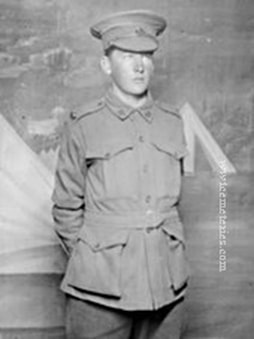
3192 Private
Eric Norman Louie Barge
46th Bn., Australian Infantry, A.I.F.
8th June 1917, aged 21.
Panel 7 - 17 - 23 - 25 - 27 - 29 - 31.
Son of John and Charlotte Barge, of 39, Edsall St., Malvern, Victoria. Native of Melbourne.
Eric Norman Louie Barge
46th Bn., Australian Infantry, A.I.F.
8th June 1917, aged 21.
Panel 7 - 17 - 23 - 25 - 27 - 29 - 31.
Son of John and Charlotte Barge, of 39, Edsall St., Malvern, Victoria. Native of Melbourne.
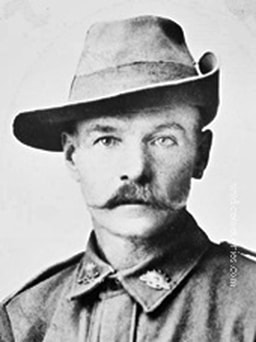
1477 Private
James Barker
34th Bn. Australian Inf. A.I.F.
20th July 1917.
Panel 7 - 17 - 23 - 25 - 27 - 29 - 31.
James Barker
34th Bn. Australian Inf. A.I.F.
20th July 1917.
Panel 7 - 17 - 23 - 25 - 27 - 29 - 31.
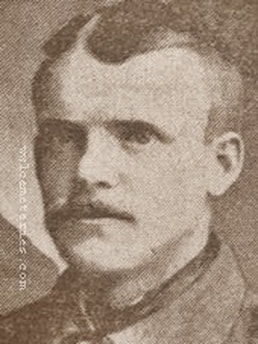
6093 Private
James Barker D. C. M.
1st Bn. East Lancashire Regiment
7th July 1915, aged 34.
Panel 34.
Husband of Annie Barker, of 23, Bower St., Blackburn
James Barker D. C. M.
1st Bn. East Lancashire Regiment
7th July 1915, aged 34.
Panel 34.
Husband of Annie Barker, of 23, Bower St., Blackburn
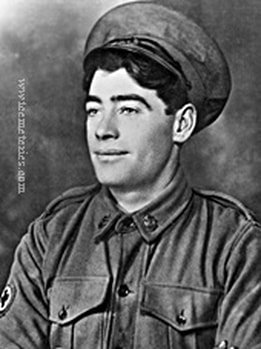
8165 Private
John Thomas Barker
2nd Field Ambulance
Australian Army Medical Corps
20th September 1917, aged 25.
Panel 31.
Son of Annie Barker, of 141, Mansfield St., Northcote, Victoria, and the late Joseph Barker.
John Thomas Barker
2nd Field Ambulance
Australian Army Medical Corps
20th September 1917, aged 25.
Panel 31.
Son of Annie Barker, of 141, Mansfield St., Northcote, Victoria, and the late Joseph Barker.
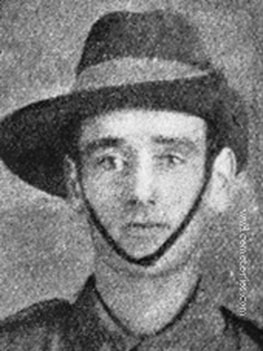
2761 Private
Cecil Ernest Bartlett
32nd Bn., Australian Infantry, A.I.F.
30th September 1917.
Panel 7 - 17 - 23 - 25 - 27 - 29 - 31.
Cecil Ernest Bartlett
32nd Bn., Australian Infantry, A.I.F.
30th September 1917.
Panel 7 - 17 - 23 - 25 - 27 - 29 - 31.
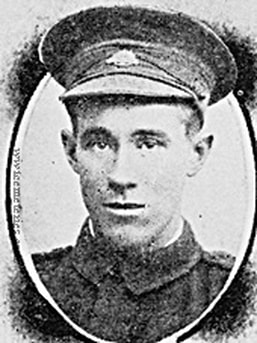
4733 Private
Roderick James Bell
50th Bn., Australian Infantry, A.I.F.
11th June 1917, aged 24.
Panel 7 - 17 - 23 - 25 - 27 - 29 - 31.
Son of Francis John Patterson Bell and Elizabeth Hannah Bell. Native of McLaren Vale, South Australia.
Roderick James Bell
50th Bn., Australian Infantry, A.I.F.
11th June 1917, aged 24.
Panel 7 - 17 - 23 - 25 - 27 - 29 - 31.
Son of Francis John Patterson Bell and Elizabeth Hannah Bell. Native of McLaren Vale, South Australia.
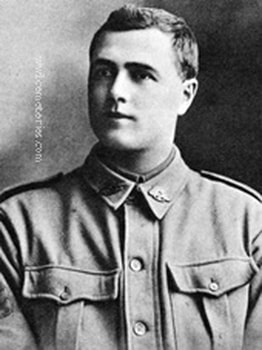
5037 Private
Herbert Bennett
8th Bn. Australian Infantry, A.I.F.
25th October 1917, aged 27.
Panel 7 - 17 - 23 - 25 - 27 - 29 - 31.
Son of Alfred and Minnie Bennett, of "Ravello," 14, Hoddle St., Elsternwick, Victoria. Native of Ballarat.
Herbert Bennett
8th Bn. Australian Infantry, A.I.F.
25th October 1917, aged 27.
Panel 7 - 17 - 23 - 25 - 27 - 29 - 31.
Son of Alfred and Minnie Bennett, of "Ravello," 14, Hoddle St., Elsternwick, Victoria. Native of Ballarat.
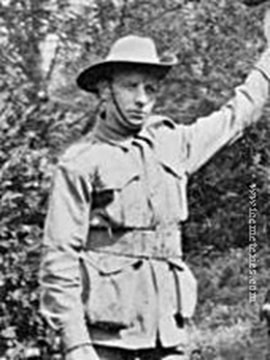
3127 Private
Claude Leslie Berriman
50th Bn., Australian Infantry, A.I.F.
15th October 1917.
Panel 7 - 17 - 23 - 25 - 27 - 29 - 31.
Son of James and Janey Berriman. Native of Gawler, South Australia.
Claude Leslie Berriman
50th Bn., Australian Infantry, A.I.F.
15th October 1917.
Panel 7 - 17 - 23 - 25 - 27 - 29 - 31.
Son of James and Janey Berriman. Native of Gawler, South Australia.
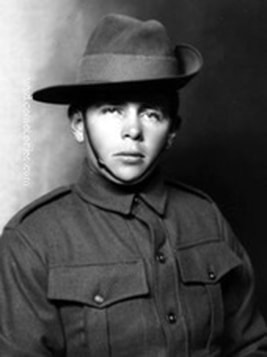
1271 Private
Alfred Oswald Binger
29th Bn. Australian Infantry, A.I.F.
Between 26th September 1917 and 27th September 1917, aged 20.
Panel 7 - 17 - 23 - 25 - 27 - 29 - 31.
Son of Samuel Henry and Janet Binger, of Inglewood, Victoria.
Alfred Oswald Binger
29th Bn. Australian Infantry, A.I.F.
Between 26th September 1917 and 27th September 1917, aged 20.
Panel 7 - 17 - 23 - 25 - 27 - 29 - 31.
Son of Samuel Henry and Janet Binger, of Inglewood, Victoria.
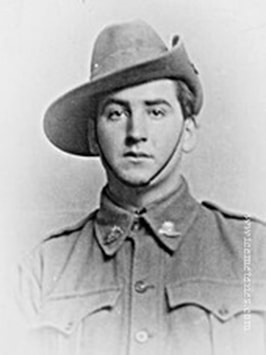
2521 Private
Clarence Leslie Bird
34th Bn., Australian Infantry, A.I.F.
12th October 1917.
Panel 7 - 17 - 23 - 25 - 27 - 29 - 31.
Clarence Leslie Bird
34th Bn., Australian Infantry, A.I.F.
12th October 1917.
Panel 7 - 17 - 23 - 25 - 27 - 29 - 31.
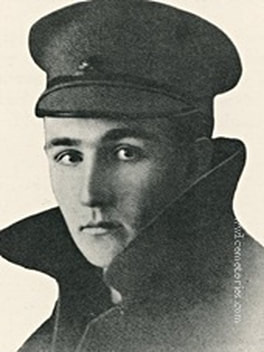
2745 Private
Arthur Noel Russell Blayney
58th Bn. Australian Infantry, A.I.F.
26th September 1917, aged 19.
Panel 7 - 17 - 23 - 25 - 27 - 29 - 31.
Son of Oliver and Blanche Maud Blayney, of 19, Queen St., Melbourne. Native of Warrnambool, Victoria.
Arthur Noel Russell Blayney
58th Bn. Australian Infantry, A.I.F.
26th September 1917, aged 19.
Panel 7 - 17 - 23 - 25 - 27 - 29 - 31.
Son of Oliver and Blanche Maud Blayney, of 19, Queen St., Melbourne. Native of Warrnambool, Victoria.
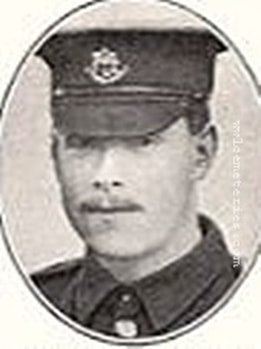
10344 Private
Alfred Birch Bolas
2nd Bn. Worcestershire Regiment
7th November 1914.
Panel 34.
Alfred Birch Bolas
2nd Bn. Worcestershire Regiment
7th November 1914.
Panel 34.
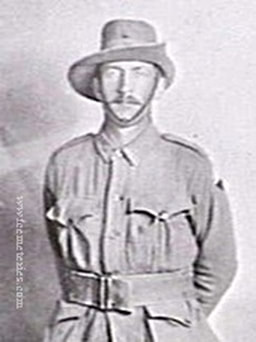
164 Private
John Booth
20th Bn., Australian Infantry, A.I.F.
9th October 1917, aged 30.
Panel 7 - 17 - 23 - 25 - 27 - 29 - 31.
Son of John James and Ada Booth, of 54, Glassap St., Balmain, Sydney.
John Booth
20th Bn., Australian Infantry, A.I.F.
9th October 1917, aged 30.
Panel 7 - 17 - 23 - 25 - 27 - 29 - 31.
Son of John James and Ada Booth, of 54, Glassap St., Balmain, Sydney.
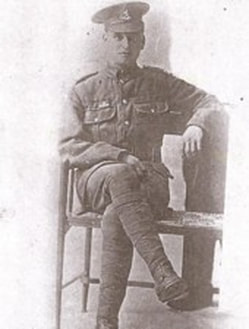
253239 Private
Ernest Achille Boudrie
1st/3rd Bn. London Regiment, (Royal Fusiliers)
16th August 1917, aged 19.
Panel 52.
He was born 6 Oct 1897 in Dartford, Kent, England and died 16 August 1917 at Ypres. He enlisted at Dartford and was a Private in the 3rd Bn. London Regiment (Royal Fusiliers).
Ernest Achille Boudrie
1st/3rd Bn. London Regiment, (Royal Fusiliers)
16th August 1917, aged 19.
Panel 52.
He was born 6 Oct 1897 in Dartford, Kent, England and died 16 August 1917 at Ypres. He enlisted at Dartford and was a Private in the 3rd Bn. London Regiment (Royal Fusiliers).
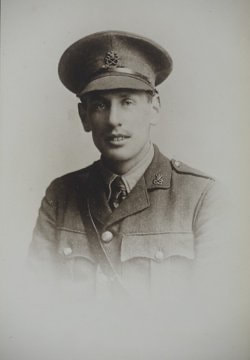
Lieutenant
John Bourn
1st Bn. North Staffordshire Regiment
31st July 1917, aged 25.
Panel 55.
Son of Margaret Bourn, of Gowtrees, Bleasdale, Preston, and the late John Bourn.
The information below supplied by 'The Ellesmerian Club', the alumni organisation for Ellesmere College where John was a pupil.
John Bourn
1st Bn. North Staffordshire Regiment
31st July 1917, aged 25.
Panel 55.
Son of Margaret Bourn, of Gowtrees, Bleasdale, Preston, and the late John Bourn.
The information below supplied by 'The Ellesmerian Club', the alumni organisation for Ellesmere College where John was a pupil.
John Bourn, the elder of two sons, of John, a farmer, and his second wife, Margaret, was born on 4th July 1892. The family lived at Lower Fairsnape but, on the death of his father when he was three years old, moved to Crow Trees Farm, Bleasdale, Nr. Garstang. The 1901 Census records Margaret as managing the farm.
John was educated at Bleasdale School where he was noted for his good attendance record. He was just twelve years old when he travelled south and, along with nineteen other new boys, entered Ellesmere College, north Shropshire on 22nd April 1904. He was allocated to the ‘Edward’ dormitory and placed in Form Upper II.
Of those who were admitted that term, three, including John, would lose their lives on active service during the war. Henry Lever and Richard Packer were both killed in the autumn of 1916. If John was to look at the War Memorial at the college today he would recognise the names of fifty of his contemporaries.
John was to remain at Ellesmere for the next seven years, leaving in 1911.This was an exceptionally long residency compared to the average stay of less than two years for most boys. There were very few aspects of college life that he did not get involved in, on the sports field or off and as his seniority increased he took on board the additional responsibilities of being a prefect.
On the sports field he played, for both his dormitory and the college, in cricket, football, athletics, hockey and swimming – earning his full Colours in several sports. In 1910, he was a member of the unbeaten football team. They played, and won, fifteen games scoring 109 goals during the season. Their opponents only managed to score a total of fifteen goals against them.
On the academic side of college life, he was awarded many different prizes including Greek, English, Religious Knowledge, Prose and French. He also attained good results in his Oxford Examinations. He played a very active part as a member of the Debating Society and on 13th October 1908, John moved that “In the opinion of this house, the police are inefficient”. He lost that motion by 7 votes to 2.
In the 1909 Shakespearian society production of “As You Like It”, he took on the role of Adam. The Ellesmerian’s drama critic wrote “Few did better than Bourn, in fact it was questioned whether we saw a more finished study than his Adam. The part is a trifle tedious, and has produced mocks ere now, but Bourn by real hard work and by conscientious practice of the Stage Manager's recommendations won a great success”.
By the end of 1909, John’s contribution to college life had been recognised and he was made a Prefect. In his ‘free’ time, he was a member of the Officer Training Corps.
When he left Ellesmere, John continued his education as a student of theology at Keble College, Oxford and then moved on to Egerton Hall Theological College, part of Manchester University, where he was a member of the university Officer Training Corps from 1914 until he submitted his application for a commission in January 1915.
On completion of his Officer Training he was gazetted 2nd Lieutenant into the 8th Battalion, the North Staffordshire Regiment. His promotion to Lieutenant was gazetted on 17th April 1916 and he embarked for France the following August. The battalion had been stationed in Ireland in August 1914 but by the middle of September it was stationed back in England preparing for war and soon embarked for St. Nazaire to take part in many actions on The Western Front including the actions on The Aisne Heights. The battalion took part in the well documented Christmas Truce of 1914.
In 1915, John saw action at Hooge and, late on in October, the regiment transferred to the 72nd Brigade, the 24th Division and continued to engage in various actions during 1916 including the German gas attack at Wulverghem, the Battle of Delville Wood and the Battle of Guillemont. In 1917 the regiment saw action at Vimy Ridge, the Battle of Messines, the Battle of Pilkem Ridge, the Battle of Langermark and the Cambrai Operations. At some stage John transferred to the 1st Battalion.
The 1st Battalion, the North Staffordshire Regiment took part on the first day of the 3rd Battle of Ypres (which later became known as Passchendaele). This began on 31st July 1917 and John Bourn was to lose his life on this day.
The Division was to form a defensive flank for the main assault, and the battalion objective was to capture the German front and second line trenches and the remains of Bulgar Wood. These two trenches were called ‘Jehovah’ and ‘Jordan’ trenches, 1000 and 1500 yards respectively from the British front line. Prior to the offensive the battalion had been at Seninghem, where it had been practising for the attack for three weeks. On the night of 29th July, they marched from here to trenches just south of the Menin-Ypres Railway, remaining here all of the next day.
On the night of 30th / 31st July, ‘B’, ‘C’ and ‘D’ Companies (John being in ‘B’ Company), moved to the assembly positions in front of the Mount Sorrel system. Zero hour was 3.50 a.m. on the morning of 31st July and at first the attack went well, both the trenches allotted as the battalion objectives being captured. However, the enemy opened a very heavy enfilade fire with machine guns from positions at Shrewsbury Forest on the left and Bulgar Wood in front of the battalion. The war diary records “a great many casualties, especially amongst the officers’ who, with the exception of two were all killed or wounded by 5.30 a.m. Casualties for this day were recorded in the war diary as 11 officers killed, wounded or missing: 42 other ranks killed, 239 wounded and 21 missing, believed killed.”
John Bourn was one of the officers killed on this day. John’s Commanding Officer wrote to his mother to explain that John was leading his men into an advanced position when he was shot through the chest by a machine gun bullet and died instantly. He was buried where he fell, but the grave must have disappeared as he is commemorated among the ‘missing’ on the Menin Gate.
A memorial service was held for John on 19th August 1917 in Bleasdale St. Eadmer’s church. The Reverend J.H.F. Parker addressed the large congregation and “spoke feelingly of the loss sustained and described the dead officer as a consistent and loyal churchman. He was of a kind and genial disposition and was as much a friend as an officer to his men”.
John’s life is commemorated on the Menin Gate, Ypres and on memorials at Ellesmere College, Bleasdale St. Eadmer Church, Whitechapel, Keble College and Manchester University. His name is also engraved on the Bourn family grave in Bleasdale churchyard. He was awarded the Victory Medal and the British War Medal.
John was educated at Bleasdale School where he was noted for his good attendance record. He was just twelve years old when he travelled south and, along with nineteen other new boys, entered Ellesmere College, north Shropshire on 22nd April 1904. He was allocated to the ‘Edward’ dormitory and placed in Form Upper II.
Of those who were admitted that term, three, including John, would lose their lives on active service during the war. Henry Lever and Richard Packer were both killed in the autumn of 1916. If John was to look at the War Memorial at the college today he would recognise the names of fifty of his contemporaries.
John was to remain at Ellesmere for the next seven years, leaving in 1911.This was an exceptionally long residency compared to the average stay of less than two years for most boys. There were very few aspects of college life that he did not get involved in, on the sports field or off and as his seniority increased he took on board the additional responsibilities of being a prefect.
On the sports field he played, for both his dormitory and the college, in cricket, football, athletics, hockey and swimming – earning his full Colours in several sports. In 1910, he was a member of the unbeaten football team. They played, and won, fifteen games scoring 109 goals during the season. Their opponents only managed to score a total of fifteen goals against them.
On the academic side of college life, he was awarded many different prizes including Greek, English, Religious Knowledge, Prose and French. He also attained good results in his Oxford Examinations. He played a very active part as a member of the Debating Society and on 13th October 1908, John moved that “In the opinion of this house, the police are inefficient”. He lost that motion by 7 votes to 2.
In the 1909 Shakespearian society production of “As You Like It”, he took on the role of Adam. The Ellesmerian’s drama critic wrote “Few did better than Bourn, in fact it was questioned whether we saw a more finished study than his Adam. The part is a trifle tedious, and has produced mocks ere now, but Bourn by real hard work and by conscientious practice of the Stage Manager's recommendations won a great success”.
By the end of 1909, John’s contribution to college life had been recognised and he was made a Prefect. In his ‘free’ time, he was a member of the Officer Training Corps.
When he left Ellesmere, John continued his education as a student of theology at Keble College, Oxford and then moved on to Egerton Hall Theological College, part of Manchester University, where he was a member of the university Officer Training Corps from 1914 until he submitted his application for a commission in January 1915.
On completion of his Officer Training he was gazetted 2nd Lieutenant into the 8th Battalion, the North Staffordshire Regiment. His promotion to Lieutenant was gazetted on 17th April 1916 and he embarked for France the following August. The battalion had been stationed in Ireland in August 1914 but by the middle of September it was stationed back in England preparing for war and soon embarked for St. Nazaire to take part in many actions on The Western Front including the actions on The Aisne Heights. The battalion took part in the well documented Christmas Truce of 1914.
In 1915, John saw action at Hooge and, late on in October, the regiment transferred to the 72nd Brigade, the 24th Division and continued to engage in various actions during 1916 including the German gas attack at Wulverghem, the Battle of Delville Wood and the Battle of Guillemont. In 1917 the regiment saw action at Vimy Ridge, the Battle of Messines, the Battle of Pilkem Ridge, the Battle of Langermark and the Cambrai Operations. At some stage John transferred to the 1st Battalion.
The 1st Battalion, the North Staffordshire Regiment took part on the first day of the 3rd Battle of Ypres (which later became known as Passchendaele). This began on 31st July 1917 and John Bourn was to lose his life on this day.
The Division was to form a defensive flank for the main assault, and the battalion objective was to capture the German front and second line trenches and the remains of Bulgar Wood. These two trenches were called ‘Jehovah’ and ‘Jordan’ trenches, 1000 and 1500 yards respectively from the British front line. Prior to the offensive the battalion had been at Seninghem, where it had been practising for the attack for three weeks. On the night of 29th July, they marched from here to trenches just south of the Menin-Ypres Railway, remaining here all of the next day.
On the night of 30th / 31st July, ‘B’, ‘C’ and ‘D’ Companies (John being in ‘B’ Company), moved to the assembly positions in front of the Mount Sorrel system. Zero hour was 3.50 a.m. on the morning of 31st July and at first the attack went well, both the trenches allotted as the battalion objectives being captured. However, the enemy opened a very heavy enfilade fire with machine guns from positions at Shrewsbury Forest on the left and Bulgar Wood in front of the battalion. The war diary records “a great many casualties, especially amongst the officers’ who, with the exception of two were all killed or wounded by 5.30 a.m. Casualties for this day were recorded in the war diary as 11 officers killed, wounded or missing: 42 other ranks killed, 239 wounded and 21 missing, believed killed.”
John Bourn was one of the officers killed on this day. John’s Commanding Officer wrote to his mother to explain that John was leading his men into an advanced position when he was shot through the chest by a machine gun bullet and died instantly. He was buried where he fell, but the grave must have disappeared as he is commemorated among the ‘missing’ on the Menin Gate.
A memorial service was held for John on 19th August 1917 in Bleasdale St. Eadmer’s church. The Reverend J.H.F. Parker addressed the large congregation and “spoke feelingly of the loss sustained and described the dead officer as a consistent and loyal churchman. He was of a kind and genial disposition and was as much a friend as an officer to his men”.
John’s life is commemorated on the Menin Gate, Ypres and on memorials at Ellesmere College, Bleasdale St. Eadmer Church, Whitechapel, Keble College and Manchester University. His name is also engraved on the Bourn family grave in Bleasdale churchyard. He was awarded the Victory Medal and the British War Medal.
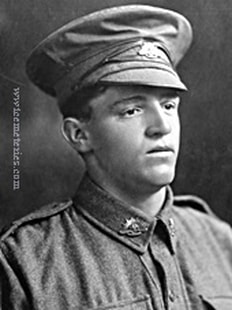
13262 Private
Leslie Emanuel Bowman
4th Field Ambulance
Australian Army Medical Corps
8th June 1917, aged 23.
Panel 31.
Son of James Ballantine Bowman and Lizzie Maria Bowman, of 1, Somerset St., Richmond, Victoria.
Leslie Emanuel Bowman
4th Field Ambulance
Australian Army Medical Corps
8th June 1917, aged 23.
Panel 31.
Son of James Ballantine Bowman and Lizzie Maria Bowman, of 1, Somerset St., Richmond, Victoria.
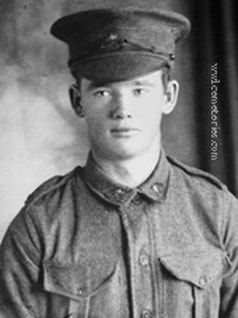
323 Private
Charles Victor Boyes
4th Coy. Australian Machine Gun Corps
26th September 1917, aged 20.
Panel 31.
Son of Edward and Jane Elenor Boyes, of Parker's Rd., Southern Cross, Western Australia
Charles Victor Boyes
4th Coy. Australian Machine Gun Corps
26th September 1917, aged 20.
Panel 31.
Son of Edward and Jane Elenor Boyes, of Parker's Rd., Southern Cross, Western Australia
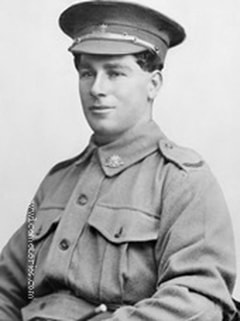
5051 Lance Corporal
Harold Charles Boyle
6th Bn. Australian Infantry A.I.F.
4th October 1917, aged 23.
Panel 7 - 17 - 23 - 25 - 27 - 29 - 31.
Son of John and Elizabeth Boyle, of "Verdantvale," North Boort, Victoria.
Harold Charles Boyle
6th Bn. Australian Infantry A.I.F.
4th October 1917, aged 23.
Panel 7 - 17 - 23 - 25 - 27 - 29 - 31.
Son of John and Elizabeth Boyle, of "Verdantvale," North Boort, Victoria.
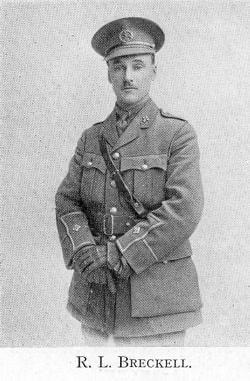
Second Lieutenant
Ralph Leicester Breckell
3rd Bn. South Lancashire Regiment
9th July 1915, aged 25.
Panel 37.
Son of Edward J. B. and Emilia M. Breckell, of 12, Alexandra Rd., Waterloo, Liverpool.
The information below supplied by 'The Ellesmerian Club', the alumni organisation for Ellesmere College where Ralph was a pupil.
Ralph Leicester Breckell
3rd Bn. South Lancashire Regiment
9th July 1915, aged 25.
Panel 37.
Son of Edward J. B. and Emilia M. Breckell, of 12, Alexandra Rd., Waterloo, Liverpool.
The information below supplied by 'The Ellesmerian Club', the alumni organisation for Ellesmere College where Ralph was a pupil.
Ralph Leicester Breckell, the second son of Edward and Emilia Breckell was born on 11th April 1890 in West Derby, Liverpool. He arrived at Ellesmere College, along with twenty six other ‘new boys’, in September 1900 and was allocated to the ‘Alfred’ dormitory. His elder brother, Edward, was already enrolled and by 1903 all three brothers would be at the college when Harold joined them.
The brothers seemed to enjoy their sports and Ralph represented his dormitory in all the major sports, often being in a team alongside one of his brothers. The cricket report for Summer 1905 reports “he played by far the best games for the ‘Alfred’ “with that season’s statistics showing that in one match he took four wickets for two runs. He was also quite an athlete and on Sports Day 1905 he took first place in the Under 15 Long Jump, 100 and 220 yard races. There are no records of any academic achievements.
Ralph left Ellesmere in April 1905 and entered the commercial world of insurance with the State Insurance Company. By the time war broke out he was Resident Secretary for the British Crown Insurance Company in Liverpool and had a promising career in prospect. A newspaper report after his death recorded that “he was highly esteemed by the Directors and management”,
He enlisted in the 18th (Service) Battalion, the King’s Liverpool Regiment in August 1914. He was gazetted 2ndLieutenant on 20th February 1915 to the 3rd Battalion, the South Lancashire Regiment, and was latterly attached to the 2nd Battalion, the Lancashire Fusiliers with whom he saw active service at the Front.
Ralph was killed whilst in action on the canal between Pilkem and Boesinghe, during the severe fighting between 5th and 9th July 1915. The news was broken to his parents by way of a War Office telegram in the following terms; ”Deeply regret to inform you that Second Lt. L. Breckell, South Lancashire Regiment was killed in action on 9th July. Lord Kitchener expresses his sympathy”. He was 25 years old.
His orderly, Private Murphy wrote: “He died fighting like a true English gentleman, being in charge of a party of bomb throwers who held onto each a purpose that they were piling themselves on top of one another, and I am very pleased to tell you that he did not suffer more than a minute, just calling my name like this ‘Oh, Murphy’: then I caught him and laid him down and as near as I could make out he said a few prayers, and then passed peacefully away looking as if he had gone to sleep.” Private Murphy described the cause of death as a piece of shrapnel that caught him in line with his left shoulder, striking his heart.
His obituary was published in ‘The Times’ on 17th July 1915. His life is commemorated on the Menin Gate Memorial, the Seaforth and Waterloo Civic Memorial, the Liverpool Anfield Cemetery and the memorials at Waterloo Rugby Football Club and the Christ Church,Waterloo. At Ellesmere, his life is remembered on the War Memorial outside the college Chapel and on an individual family plaque mounted alongside. His sacrifice is also commemorated in the college’s Roll of Honour.
The brothers seemed to enjoy their sports and Ralph represented his dormitory in all the major sports, often being in a team alongside one of his brothers. The cricket report for Summer 1905 reports “he played by far the best games for the ‘Alfred’ “with that season’s statistics showing that in one match he took four wickets for two runs. He was also quite an athlete and on Sports Day 1905 he took first place in the Under 15 Long Jump, 100 and 220 yard races. There are no records of any academic achievements.
Ralph left Ellesmere in April 1905 and entered the commercial world of insurance with the State Insurance Company. By the time war broke out he was Resident Secretary for the British Crown Insurance Company in Liverpool and had a promising career in prospect. A newspaper report after his death recorded that “he was highly esteemed by the Directors and management”,
He enlisted in the 18th (Service) Battalion, the King’s Liverpool Regiment in August 1914. He was gazetted 2ndLieutenant on 20th February 1915 to the 3rd Battalion, the South Lancashire Regiment, and was latterly attached to the 2nd Battalion, the Lancashire Fusiliers with whom he saw active service at the Front.
Ralph was killed whilst in action on the canal between Pilkem and Boesinghe, during the severe fighting between 5th and 9th July 1915. The news was broken to his parents by way of a War Office telegram in the following terms; ”Deeply regret to inform you that Second Lt. L. Breckell, South Lancashire Regiment was killed in action on 9th July. Lord Kitchener expresses his sympathy”. He was 25 years old.
His orderly, Private Murphy wrote: “He died fighting like a true English gentleman, being in charge of a party of bomb throwers who held onto each a purpose that they were piling themselves on top of one another, and I am very pleased to tell you that he did not suffer more than a minute, just calling my name like this ‘Oh, Murphy’: then I caught him and laid him down and as near as I could make out he said a few prayers, and then passed peacefully away looking as if he had gone to sleep.” Private Murphy described the cause of death as a piece of shrapnel that caught him in line with his left shoulder, striking his heart.
His obituary was published in ‘The Times’ on 17th July 1915. His life is commemorated on the Menin Gate Memorial, the Seaforth and Waterloo Civic Memorial, the Liverpool Anfield Cemetery and the memorials at Waterloo Rugby Football Club and the Christ Church,Waterloo. At Ellesmere, his life is remembered on the War Memorial outside the college Chapel and on an individual family plaque mounted alongside. His sacrifice is also commemorated in the college’s Roll of Honour.
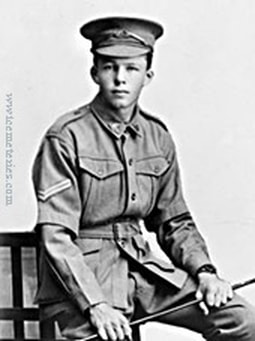
4384 Private
James Herman Breuer
48th Bn., Australian Infantry, A.I.F.
12th October 1917, aged 23.
Panel 7 - 17 - 23 - 25 - 27 - 29 - 31.
Son of Herman and Jessie Fergusson Breuer, of Brockman Rd., Midland Junction, Western Australia. Native of Perth, Western Australia.
James Herman Breuer
48th Bn., Australian Infantry, A.I.F.
12th October 1917, aged 23.
Panel 7 - 17 - 23 - 25 - 27 - 29 - 31.
Son of Herman and Jessie Fergusson Breuer, of Brockman Rd., Midland Junction, Western Australia. Native of Perth, Western Australia.
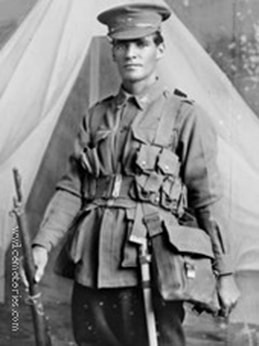
5054 Lance Corporal
Henry Charles Brighton
6th Bn. Australian Infantry, A.I.F.
30th October 1917.
Panel 7 - 17 - 23 - 25 - 27 - 29 - 31.
Henry Charles Brighton
6th Bn. Australian Infantry, A.I.F.
30th October 1917.
Panel 7 - 17 - 23 - 25 - 27 - 29 - 31.
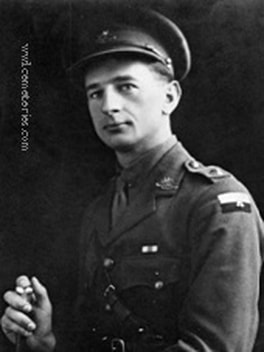
Second Lieutenant
Reginald William Brinsmead, M. C.
8th Bn. Australian Infantry, A.I.F.
17th December 1917, aged 24.
Panel 7 - 17 - 23 - 25 - 27 - 29 - 31
Son of Henry and Jemima Brinsmead, of Leopold, Victoria.
Reginald William Brinsmead, M. C.
8th Bn. Australian Infantry, A.I.F.
17th December 1917, aged 24.
Panel 7 - 17 - 23 - 25 - 27 - 29 - 31
Son of Henry and Jemima Brinsmead, of Leopold, Victoria.
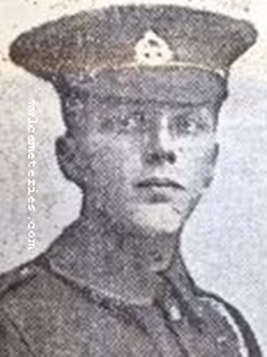
15111 Lance Corporal
Thomas Broadley
7th Bn. East Lancashire Regiment
2nd August 1917, aged 22.
Panel 34.
Son of William Joseph and Minnie Broadley, of 46, Sultan St., Accrington.
Thomas Broadley
7th Bn. East Lancashire Regiment
2nd August 1917, aged 22.
Panel 34.
Son of William Joseph and Minnie Broadley, of 46, Sultan St., Accrington.
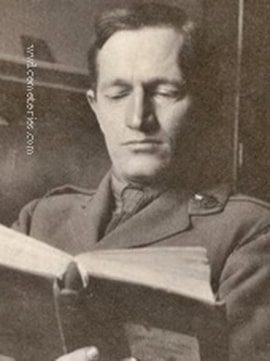
Lieutenant
Charles Dane Brown
16th Bn. Australian Infantry, A.I.F.
26th September 1917.
Panel 7 - 17 - 23 - 25 - 27 - 29 - 31.
Charles Dane Brown
16th Bn. Australian Infantry, A.I.F.
26th September 1917.
Panel 7 - 17 - 23 - 25 - 27 - 29 - 31.
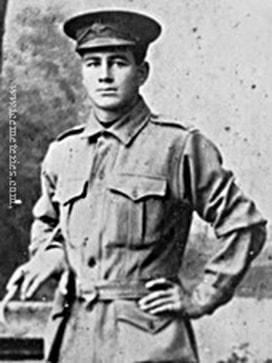
3731 Private
Edward Huxley Brown
51st Bn., Australian Infantry, A.I.F.
10th June 1917.
Panel 7 - 17 - 23 - 25 - 27 - 29 - 31.
Edward Huxley Brown
51st Bn., Australian Infantry, A.I.F.
10th June 1917.
Panel 7 - 17 - 23 - 25 - 27 - 29 - 31.
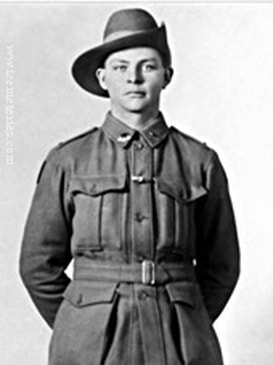
1725 Private
George Brown
49th Bn., Australian Infantry, A.I.F.
7th June 1917.
Panel 7 - 17 - 23 - 25 - 27 - 29 - 31.
George Brown
49th Bn., Australian Infantry, A.I.F.
7th June 1917.
Panel 7 - 17 - 23 - 25 - 27 - 29 - 31.
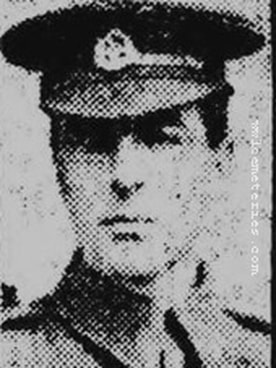
27266 Private
Percy Brown
7th Bn. East Lancashire Regiment
31st July 1917, aged 25.
Panel 34.
Son of Pte. G. T. and Amy Brown, of 66, Peel St., Hull
Percy Brown
7th Bn. East Lancashire Regiment
31st July 1917, aged 25.
Panel 34.
Son of Pte. G. T. and Amy Brown, of 66, Peel St., Hull
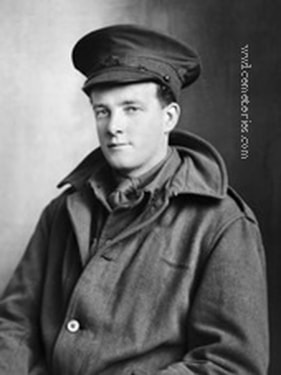
2136 Corporal
Leonard Bryant
59th Bn. Australian Infantry, A.I.F.
16th October 1917.
Panel 7 - 17 - 23 - 25 - 27 - 29 - 31.
Son of Charles and Flora D. Bryant, of 5, Marden St., Canterbury, Victoria. Native of Melbourne.
Leonard Bryant
59th Bn. Australian Infantry, A.I.F.
16th October 1917.
Panel 7 - 17 - 23 - 25 - 27 - 29 - 31.
Son of Charles and Flora D. Bryant, of 5, Marden St., Canterbury, Victoria. Native of Melbourne.
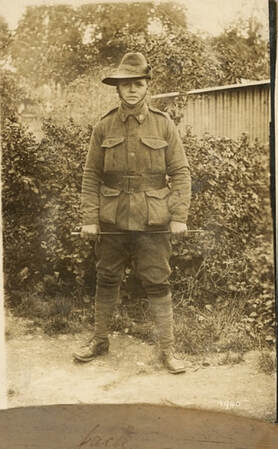
2334 Private
John William Buckingham
2nd Bn. Australian Pioneers
3rd October 1917.
Panel 31.
Informal portrait of 2334 Private (Pte) John William Buckingham, 2nd Pioneer Battalion. Pte Buckingham, a labourer from Abbotsford, Vic, was killed in action at Broodseinde, Belgium on 3 October 1917. He was originally buried in an isolated grave 3/4 mile west of Zonnebeke, and 3 3/4 mile east of Ypres, Belgium. The exact whereabouts of the grave are not known and he is commemorated at the Ypres (Menin Gate) Memorial in Belgium. Pte Buckingham sent back home some dried leaves, probably from a protea, he had collected during his troopship's stay at Cape Town, South Africa. On these he had written 'Jack', '1916' and 'South Africa, Grown on Table Mount'. His sister, Ivy Elizabeth, used these leaves to frame his portrait in the family photograph album. Pte Buckingham's father 1086 Private (Pte) William John Buckingham, 6th Battalion, was killed in action during the 2nd Brigade attack on Krithia, Turkey, on 8 May 1915. He has no known grave and is commemorated at the Cape Helles Memorial, Gallipoli.
John William Buckingham
2nd Bn. Australian Pioneers
3rd October 1917.
Panel 31.
Informal portrait of 2334 Private (Pte) John William Buckingham, 2nd Pioneer Battalion. Pte Buckingham, a labourer from Abbotsford, Vic, was killed in action at Broodseinde, Belgium on 3 October 1917. He was originally buried in an isolated grave 3/4 mile west of Zonnebeke, and 3 3/4 mile east of Ypres, Belgium. The exact whereabouts of the grave are not known and he is commemorated at the Ypres (Menin Gate) Memorial in Belgium. Pte Buckingham sent back home some dried leaves, probably from a protea, he had collected during his troopship's stay at Cape Town, South Africa. On these he had written 'Jack', '1916' and 'South Africa, Grown on Table Mount'. His sister, Ivy Elizabeth, used these leaves to frame his portrait in the family photograph album. Pte Buckingham's father 1086 Private (Pte) William John Buckingham, 6th Battalion, was killed in action during the 2nd Brigade attack on Krithia, Turkey, on 8 May 1915. He has no known grave and is commemorated at the Cape Helles Memorial, Gallipoli.
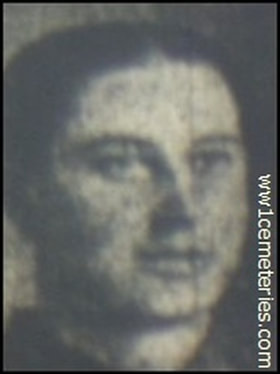
16748 Private
Edwin James Burt
7th Bn. Duke of Cornwall's Light Infantry
11th April 1916, aged 22.
Panel 20.
Son of Richard Burt, of Carne Cottage, St. Blazey, Par Station, Cornwall.
Edwin James Burt
7th Bn. Duke of Cornwall's Light Infantry
11th April 1916, aged 22.
Panel 20.
Son of Richard Burt, of Carne Cottage, St. Blazey, Par Station, Cornwall.
Dedications
28318 Private Arthur Omer Belsey, 8th Bn. East Surrey Regiment, 09/08/1917 aged 25. Panel 34 Son of Thomas H Belsey and Emily Jane Belsey (nee Allen) of Edmonton, Middlesex and Husband of Susan Maud Belsey (nee Martin) of 7 Second Avenue, Montague Road, Edmonton, Middlesex.
Remembered with Pride and Honour by Stephen Hoye.
742542 Private Charles Henry Boudreau, 26th Bn., Canadian Infantry, Born 11th April 1897, died 6th November 1917, aged 20. Panel 26-28. Son of Charles Louis Boudreau and Theresa Young formerly of 236 Sydney Street, Saint John, NB.
Brother of Joseph, Herb, James, Mildred, Violet, Alvin, Walter, Beatrice, Willard and Earl.
My mother, Gloria Rosamond Boudreau's uncle, Private Charles Henry Boudreau, was her father, Alvin Boudreau's oldest brother. This soldier was single with brown eyes and hair, a ruddy complexion, 5' 8" and in good health. My Great Uncle signed his Attestation papers for the 26th Battalion on Jan. 20, 1916. In these papers he states he previously served "15 months 62nd Regt. Detailing Co." known as 62nd Regiment, St. John Fusiliers. His records state, "This soldier was one of a stretcher party carrying out the wounded, when he was hit by a shell and killed."
Information provided by Debby Jennings-Stewart (formerly Sinera)
28318 Private Arthur Omer Belsey, 8th Bn. East Surrey Regiment, 09/08/1917 aged 25. Panel 34 Son of Thomas H Belsey and Emily Jane Belsey (nee Allen) of Edmonton, Middlesex and Husband of Susan Maud Belsey (nee Martin) of 7 Second Avenue, Montague Road, Edmonton, Middlesex.
Remembered with Pride and Honour by Stephen Hoye.
742542 Private Charles Henry Boudreau, 26th Bn., Canadian Infantry, Born 11th April 1897, died 6th November 1917, aged 20. Panel 26-28. Son of Charles Louis Boudreau and Theresa Young formerly of 236 Sydney Street, Saint John, NB.
Brother of Joseph, Herb, James, Mildred, Violet, Alvin, Walter, Beatrice, Willard and Earl.
My mother, Gloria Rosamond Boudreau's uncle, Private Charles Henry Boudreau, was her father, Alvin Boudreau's oldest brother. This soldier was single with brown eyes and hair, a ruddy complexion, 5' 8" and in good health. My Great Uncle signed his Attestation papers for the 26th Battalion on Jan. 20, 1916. In these papers he states he previously served "15 months 62nd Regt. Detailing Co." known as 62nd Regiment, St. John Fusiliers. His records state, "This soldier was one of a stretcher party carrying out the wounded, when he was hit by a shell and killed."
Information provided by Debby Jennings-Stewart (formerly Sinera)

